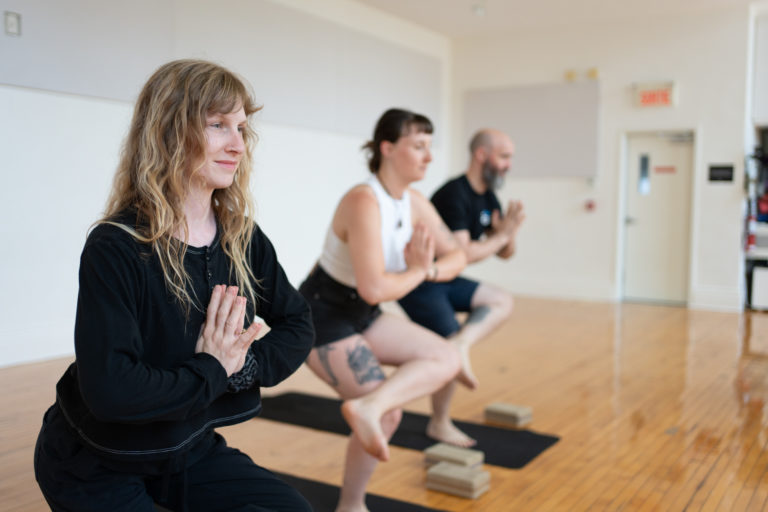My daily work routine involves long periods sitting behind a screen. Therefore, it’s crucial to find activities that counteract this sedentary lifestyle, balancing my mental and physical well-being. I discovered yoga and climbing, two seemingly different activities that are actually quite complementary. While climbing is a sport and yoga a discipline, they share common principles of concentration, flexibility, and strength. Incorporating yoga postures into my climbing routine has been a revelation, significantly benefiting my otherwise sedentary daily life.
Improvement in flexibility and mobility
First, let’s explain the difference between flexibility and mobility. Flexibility refers to a muscle or group of muscles’ ability to stretch passively through a range of motion. For example, touching your toes by bending forward demonstrates the flexibility of the hamstrings and lower back muscles.
Mobility, on the other hand, is the ability of a joint to move actively through its full range of motion. This includes not only muscle flexibility but also strength, neuromuscular control, and joint stability. For example, a deep squat requires good hip, knee, and ankle mobility, involving stretching, strength, and control of the surrounding muscles.
In climbing, flexibility is not just an advantage, it’s a necessity! Since starting yoga, I’ve noticed a significant improvement in my flexibility. This has allowed me to adopt more efficient body positions while climbing. Since starting yoga, I’ve noticed a significant improvement in my flexibility. For instance, my hip flexibility gives me an advantage in raising my feet higher and reaching distant holds, reducing the use of arm strength. In climbing, conserving this energy is crucial for better endurance on the route.
Working on mobility generally includes exercises to improve flexibility, strength, and muscle control. By combining yoga and mobility exercises, I’ve seen a significant increase in my flexibility and strength. This combination has helped me progress faster in climbing by reducing physical limitations and boosting my confidence both on and off the walls.
Climbing is about solving problems: working on yoga postures and my mobility has given me access to a wider range of movement, in order to find solutions to atypical problems.
Muscle strengthening and injury prevention
While climbing is excellent for muscle strengthening, yoga targets specific muscles often neglected. Poses like the plank or warrior have strengthened my core and legs, giving me more stability and power on the wall.
Training the antagonistic muscles, which perform the opposite movement to the primary muscles, is crucial and well-integrated into yoga. For example, if the biceps bend the elbow, the triceps straighten it. In climbing, we heavily use forearm muscles, biceps, and pulling muscles like the latissimus dorsi. The antagonistic muscles here would be the triceps, forearm extensors, and pushing muscles of the shoulders and chest.
In yoga, we often talk about polarity in a posture. Meaning finding a balance between opposing or complementary forces in the body. For example, balancing between stretching and contracting, stability and mobility, as well as strength and flexibility. This idea of polarity can greatly help in climbing. Take the tree pose (Vrksasana): the leg muscles work to maintain balance, while the core muscles contract to stabilize the body. This balance between agonist and antagonist muscles helps maintain stability. In climbing, a similar balance is needed to stay stable on unstable holds. The core muscles must work together with the legs and arms to maintain good posture on the wall.
Yoga includes strengthening and stretching exercises that are essential for injury prevention. In climbing, finger, shoulder, and back injuries are common. Regular yoga sessions have helped me maintain good muscle balance and avoid excessive strain.
Improved breathing and stress management
Breathing is often an underestimated aspect of climbing. Proper breathing management helps you stay calm and focused. Pranayama (breath control) exercises have taught me to breathe better, which is particularly useful during difficult passages where it’s easy to get overwhelmed by stress.
Climbing requires intense concentration and a deep connection with your body. Yoga, with its meditative nature, has taught me to better listen to my body and stay calm in stressful situations. This self-control is essential when I’m hanging on the wall, looking for my next hold.
Integrating yoga into my climbing practice has transformed my approach to the sport. Not only have I become more flexible and stronger, but I’ve also gained in concentration and confidence. Whether you’re starting climbing or not, yoga can bring incredible benefits to your practice. If you want to discover yoga, starting with a Hatha Base class might be a good entry point. This class allows you to break down postures, while the Vinyasa Base class explores movement and works on posture sequences, like those found in the sun salutation*. You can also talk directly with the yoga instructors at Zéro Gravité who will be happy to answer your questions.
*Sun salutations: The Sun Salutation is a dynamic composition of movements and positions (called asanas) performed in a specific order and in correlation with breathing. The sequence alternates between forward and backward bends. Concentration and active participation of the mind are also emphasized.




